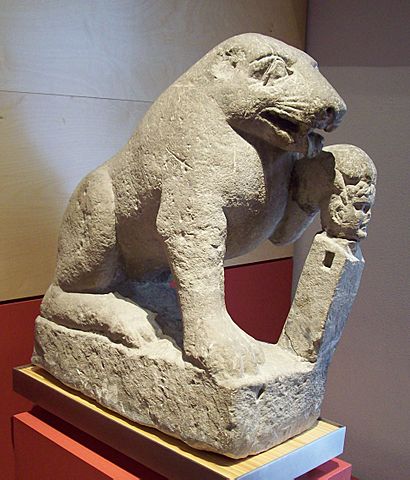Bear of Porcuna facts for kids
Quick facts for kids Bear of Porcuna |
|
|---|---|
| Spanish: Osa de Porcuna | |
 |
|
| Year | circa late 1st century BC |
| Medium | Limestone |
| Dimensions | (79 x 70 x 32) cm |
| Location | National Archaeological Museum, Madrid, Spain |
The Bear of Porcuna is a really old stone sculpture from about 2,000 years ago. It shows an animal, which could be a bear or a lioness, resting next to a special kind of pillar called a herma. You can see this amazing artwork today at the National Archaeological Museum in Madrid, Spain.
What Is the Bear of Porcuna?
This ancient sculpture was carved from limestone. It was made around the end of the 1st century BC. That means it's from a time when the Roman Empire was very powerful.
The sculpture shows an animal sitting down. It might be a bear or a lioness. The animal is leaning its front left leg on a herma. A herma is a special pillar with a head on top. In this case, the head is of a young man without a beard.
Where Was It Found?
The Bear of Porcuna was discovered in 1926. Workers found it while building an oil mill in a town called Porcuna. This town was known as Obulco during Roman times. The sculpture was found on a street called "calle del Sepulcro."
Why Was It Made?
Experts believe this sculpture had a funerary purpose. This means it was likely placed near a tomb or a burial site. It was probably meant to honor someone who had passed away.
The presence of the herma in the sculpture helps experts figure out its age. It strongly suggests the sculpture was made during the Roman era. Some think it was created during the time of Emperor Augustus. Others believe it was made a bit later, during the Julio-Claudian dynasty.
See also
 In Spanish: Oso de Porcuna para niños
In Spanish: Oso de Porcuna para niños

